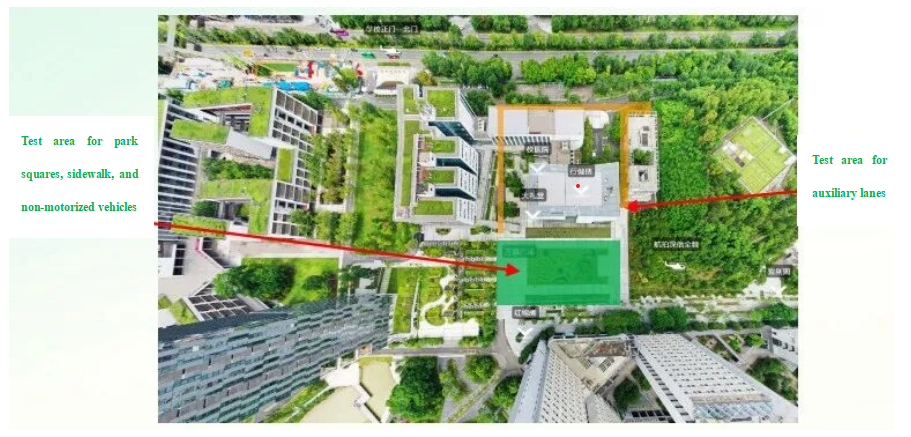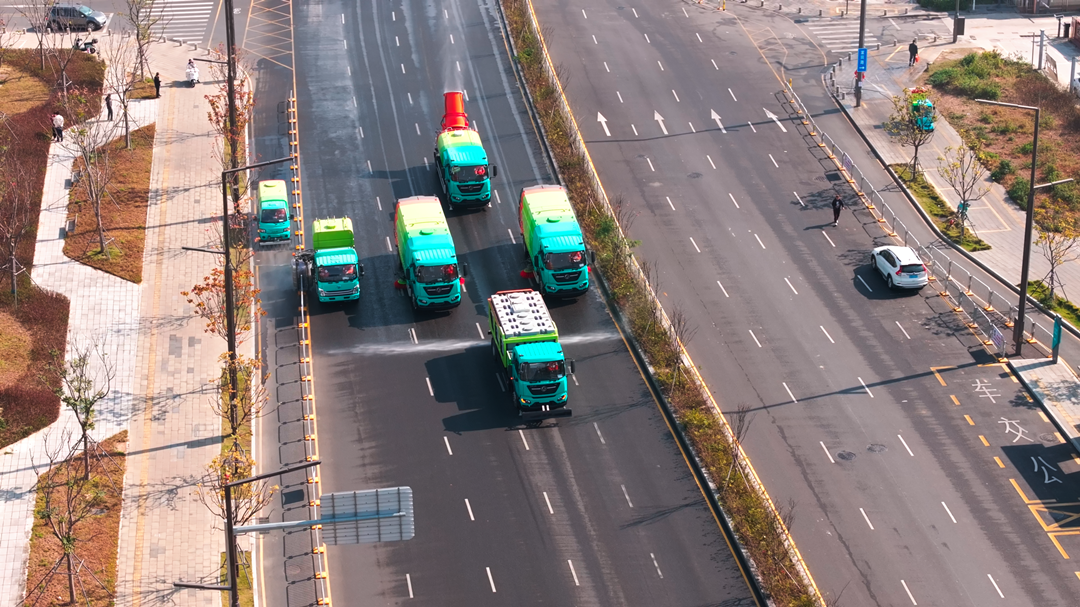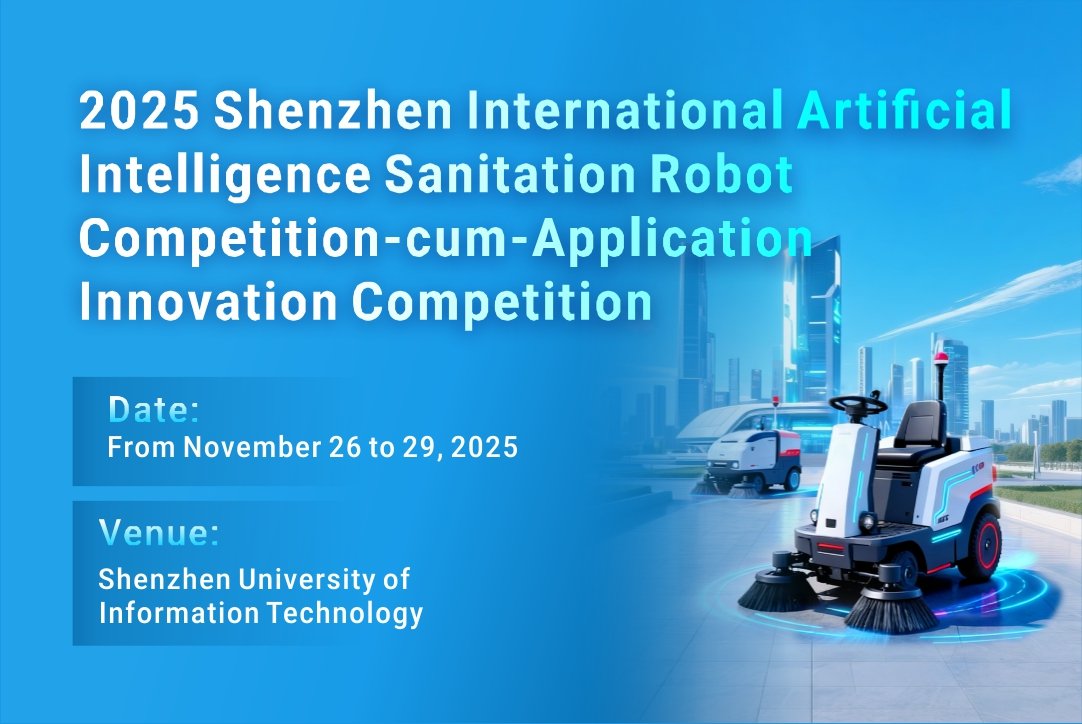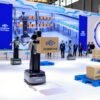From a “test field for reform and opening up” to a “pioneer demonstration zone of socialism with Chinese characteristics,” Shenzhen has always been imbued with a spirit of “daring to try” and a drive for “innovation.” For over four decades, this city has transformed from catching up with the times to leading the times. Now, it is channeling this deeply ingrained spirit of innovation into a futuristic and crucial field concerning urban operations—intelligent sanitation.
The launch of the “2025 Shenzhen International Artificial Intelligence Sanitation Robot Competition” sends a clear signal: Shenzhen is once again playing the role of a “starting point for transformation,” driving innovation through rules and empowering the entire industry with a new path for the future.
Rules are the battlefield: Real-world simulation, performance testing across four dimensions
The core essence of the “2025 Shenzhen International Artificial Intelligence Sanitation Robot Competition” lies in its scientifically rigorous and highly realistic competition rules system. The competition rules are the result of collaboration among top domestic participating companies, senior industry experts, and frontline sanitation units, and were jointly formulated after multiple rounds of repeated discussions and verifications.
Its core design concept is to use the competition arena as a “touchstone” of the real world, allowing robots to discover problems and demonstrate their value in highly realistic scenarios and extreme challenges.

Venue: Shenzhen University of Information Technology
This competition constructs an all-weather, multi-type scenario operating environment that closely approximates reality: it includes park squares, auxiliary lanes, sidewalks, and non-motorized vehicle lanes, and features a special scenario innovation track, aiming to encourage companies to break through fixed thinking and address new sanitation challenges that may arise in the future.
Specifically, through the competition rules, real-world operating scenarios are transformed into four evaluation dimensions to systematically test the robot’s comprehensive performance:
- Environmental Adaptability Test
It tests the robot’s physical coping ability in complex real-world urban environments, mainly including: climbing performance, obstacle crossing and passability, and continuous operation at night and in severe weather (rain, fog, dust). This dimension is the cornerstone for a product to become a “durable asset.”
- Cleaning Ability Test
It focuses on the effectiveness and refinement of core sanitation functions, covering: multi-type waste handling, edge and corner cleaning effects (edge cleaning), and special scenario coping such as anti-tangling. These are prerequisites for whether an AI-powered sanitation robot is “easy to use.”
- Unmanned Driving Safety Test
It ensures the robot’s intelligence and reliability on open roads. Key indicators include: dynamic and static obstacle avoidance, traffic light recognition, recognition of suspended obstacles, and stable navigation in environments without GPS signals. This is a prerequisite for “being essential” in cities.
- All-weather Operation Capability Test
It evaluates its autonomy and continuous operational efficiency. The core is: autonomous charging, autonomous replenishment (water/cleaning fluid), and autonomous garbage disposal, achieving long-term continuous operation with minimal human intervention. This is the core of the industry’s “intelligent” transformation.
In the past, the industry may not have known what problems truly intelligent sanitation should solve. These rules clearly define the real challenges and future direction facing the industry, serving not only as the judging criteria for the competition but also driving technological collaboration and upgrading across the entire industry chain, and becoming a “potential standard” for government procurement and market acceptance.
Innovation is the future: The perseverance and leap from being “usable” to “essential”
As an emerging technology, unmanned driving faces core bottlenecks that must be overcome in its journey from laboratory to real-world application, and then to commercialization and large-scale implementation. A forward-looking, inclusive, and clear policy framework is a key prerequisite for unleashing market potential.
Shenzhen has undoubtedly and accurately focused on this pain point and proactively broken the ice as a pioneer.
In February 2023, Shenzhen Municipal Bureau of Urban Management and Comprehensive Law Enforcement issued the Notice on Further Promoting the Mechanization and Intelligentization of Sanitation Operations, explicitly stating that “by the end of June 2023, each district should create at least one benchmark demonstration of unmanned intelligent cleaning, and take the lead in purchasing and using sanitation artificial intelligence products; by the end of December 2023, each street should carry out at least one pilot application scenario for unmanned intelligent cleaning.”
In March 2023, Shenzhen Three-Year Action Plan for Promoting High-Quality Development of Sanitation (2023-2025) was issued, further pointing out the need to “promote the deep integration of artificial intelligence with sanitation operations, increase the configuration ratio of unmanned sanitation vehicles, sanitation robots, and other products, and expand the application scenarios of sanitation artificial intelligence products.”
In March 2024, this grand blueprint was elevated to a collaborative effort involving multiple departments across the city. Shenzhen Municipal Bureau of Urban Management and Comprehensive Law Enforcement, Industry and Information Technology Bureau of Shenzhen Municipality, Shenzhen Municipal Transport Bureau, and Shenzhen Municipal Small and Medium Enterprises Service Bureau jointly issued the Action Plan for Accelerating the High-Quality Development and High-Level Application of Artificial Intelligence Sanitation Robots (2024-2025).
“The configuration requirements for artificial intelligence sanitation equipment will be included in the bidding and procurement scoring items and contract terms for municipal sanitation service projects. For every 10 million yuan of service project value, at least one artificial intelligence sanitation robot will be configured (the portion less than 10 million yuan will be considered as 10 million yuan).” The standard has been adopted by various districts and departments, becoming a decisive lever to unlock the large-scale market for intelligent sanitation vehicles.

It is precisely this pragmatic spirit of Shenzhen—allowing enterprises to explore boundaries and providing a stage for trial and error—that has greatly inspired intelligent sanitation companies to focus on both immediate expansion and long-term development.
It is understood that in addition to local companies such as Rhino Zhixing and Auto City, Shenzhen has attracted a large number of excellent companies in recent years, including Cowa Robot, Saite Intelligence, RoboMaster, and AutowiseAI. Furthermore, the latest data shows that approximately 400 intelligent sanitation vehicles have been put into operation in Shenzhen, with a penetration rate of nearly 10% in the municipal sector, leading the country.
The Shenzhen International Artificial Intelligence Sanitation Robot Competition is also a significant driving force behind this process. Since its successful convening of the first competition year, and its relaunch this year, the rigorous rules and regulations have had a profound and concrete impact on the healthy development of the intelligent sanitation industry.:
(I) Setting a “Trendsetter” for Technological R&D
The competition rules serve as a public “industry demand white paper.” They clearly inform all R&D institutions and enterprises that the industry no longer needs “demonstration products” that can only operate on smooth campus roads, but rather “durable assets” that can operate stably, efficiently, and safely in complex urban environments, thus preventing a disconnect between technological R&D and market demand.
(II) Providing a “Standard” for Product Procurement
For government sanitation departments and municipal service procurement entities, the competition rules and the performance of the participating robots provided them with unprecedented, quantifiable basis for purchasing decisions. “How did your robot perform in the anti-entanglement test of the competition?” “Can it correctly identify traffic lights in a simulated rainy environment?” The competition rules are subtly becoming the de facto performance evaluation standard in the industry, squeezing out the survival space of “theoretical” products.
(III) Creating a “Connector” for Industry Collaboration
The complex scenarios and high-end performance requirements defined by the rules are difficult for a single company to fully overcome. It compels upstream and downstream companies in the industry chain—from core sensor suppliers and algorithm companies to chassis manufacturers and system integrators—to engage in closer collaborative innovation.
We have witnessed Shenzhen, with its unique policy boldness and market sensitivity, providing a highly instructive “Shenzhen solution” for the development of the unmanned sanitation industry in more cities across the country. The widespread adoption of unmanned sanitation systems across all scenarios, from street-level to city-level, has already begun in Shenzhen.
The “2025 Shenzhen International Artificial Intelligence Sanitation Robot Competition” is not merely about judging who wins today, but also about collectively defining and shaping the future of the intelligent sanitation industry, driving the entire industry to make a solid leap from being “usable” to “easy to use,” “durable,” and “essential.”
It is worth mentioning that concurrent events of this competition include Shenzhen International Urban Environment Industry Expo 2025, New Intelligent Sanitation Product Launch, and Equipment Procurement Signing Ceremony.
——————————————————————————————————————————————————————————————————————————————

2025 Shenzhen International Artificial Intelligence Sanitation Robot Competition-cum-Application Innovation Competition will be held at Shenzhen University of Information Technology from November 26 to 29, 2025.

(Scan the QR code to register and watch the competition)
For details, please click https://cnmra.com/shenzhen-international-artificial-intelligence-sanitation-robot-competition-2025-will-be-held-in-shenzhen-from-november-26-to-29-2025/.





